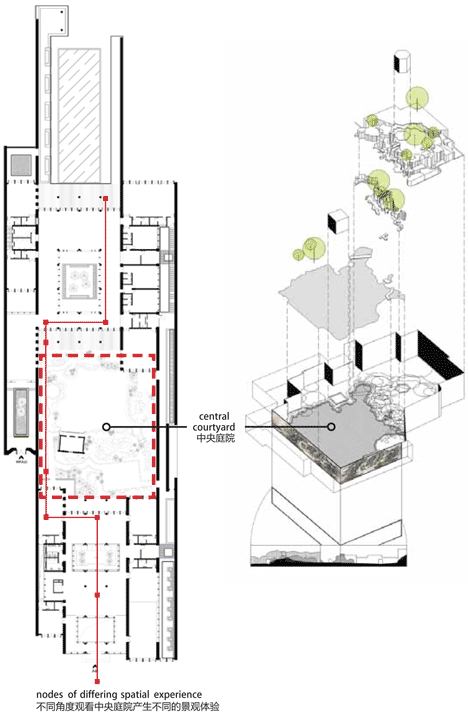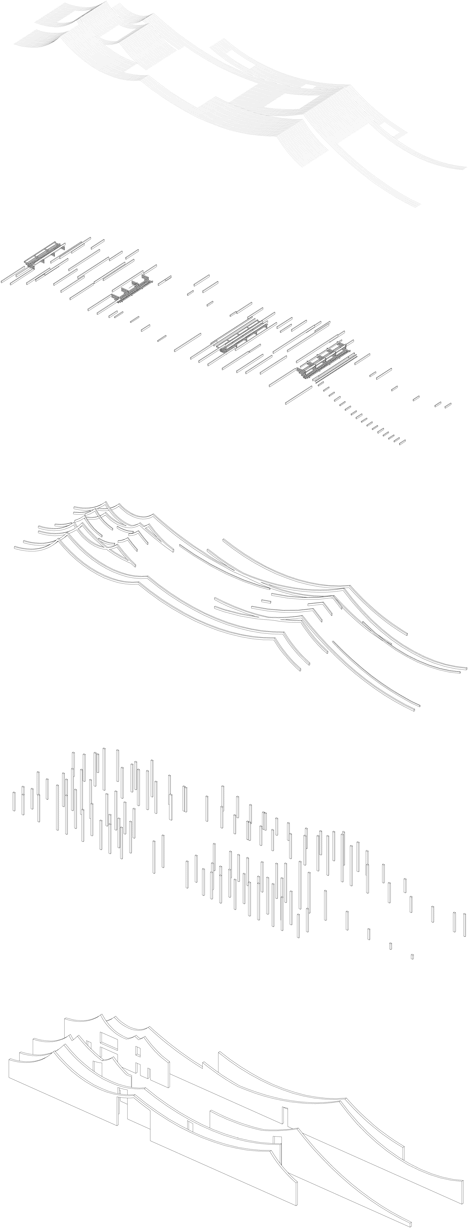این رستوران در قلب یکی از پارکهای فرهنگی شهر چنگجو در چین به ادعای طراحان بیانی برگرفته از ادبیات ساخت معماری دیجیتال اما برآمده از معماری سنتی چینه. نکتهای درست در این ادعا هست -بدون ارزشگذاری درستی یا نادرستی خود ادعا- و اون اینکه اگر الگوهای سنتی بخوان در معماری امروز متجلی بشن یقینا با زبان حاکم بر ساخت دنیای امروز محصول نباید چیزی عینا یا حتی مشابه به بناهای سنتی باشه. یعنی زبان عاملی که بر ساخت حاکمه در این میان کمتاثیر نیست.
در این کار خاص به طور ویژه الگوی آجرچینی نماهای این رستوران به واسطهی برخورداری از الگوهای پارامتریک شاخصتر از بقیه بنا شده در حالی که نزدیکی حال و هوای کل اثر به الگوهای سنتی چینی تا حدودی میتونه ادعای طراحان اثر رو اثبات کنه
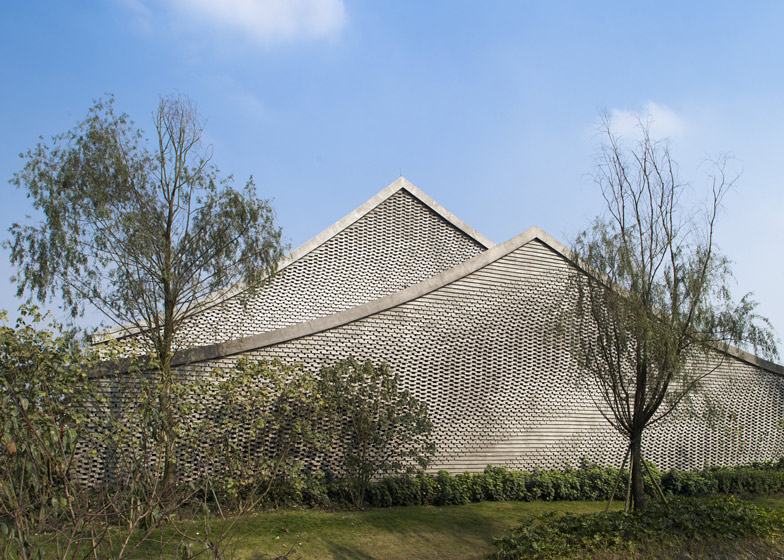
Shanghai studio Archi-Union used differently sized bricks to make waves across the exterior of this restaurant and members’ club at a cultural heritage park in Chengdu, China.
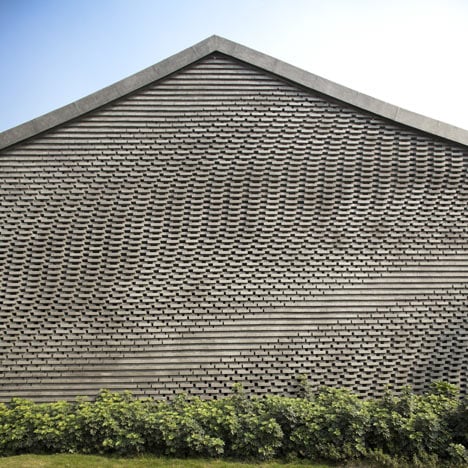
The architects used an algorithm to specify nine different brick types, which were laid by hand to create the wave-like texture across each wall.
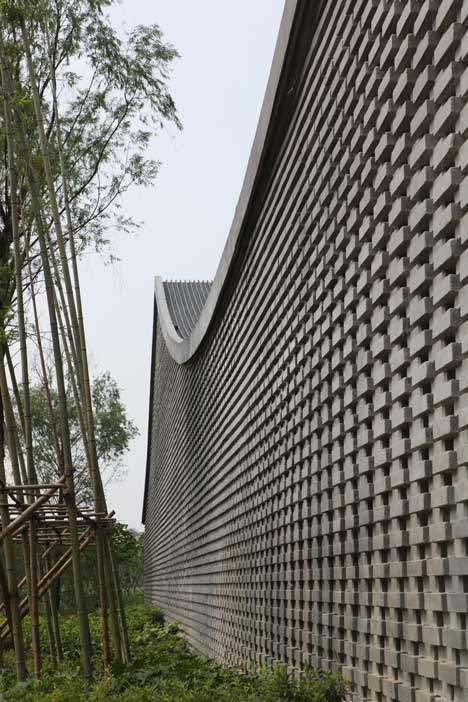
Sloping roofs visually divide the longitudinal building into separate blocks and their curving shapes were designed by Archi-Union to reference mountains and rivers, as well as a typical form in Chinese architecture.
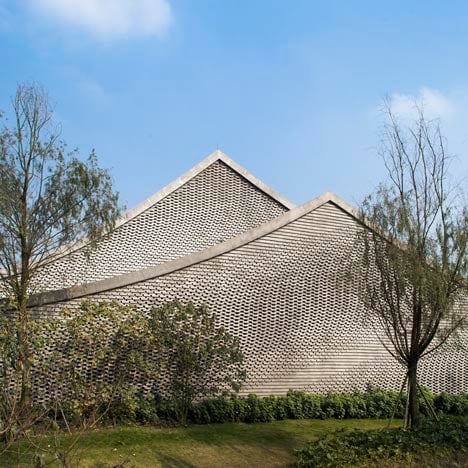
“The Lan Xi Curtilage is an interpretation of traditional Chinese architecture through the language of digital fabrication methods,” Archi-Union’s Crisie Yuan told Dezeen.
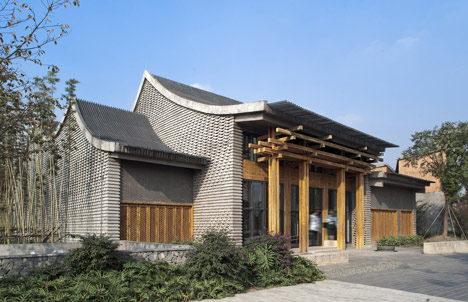
The restaurant and private club are positioned on opposite sides of a central courtyard, where pathways divide the lawn and dictate routes towards different rooms.

The Lan Xi Curtilage is located at the International Intangible Cultural Heritage Park, which plays host to a biennial festival dedicated to language, music, dance, storytelling, carnivals and rituals.
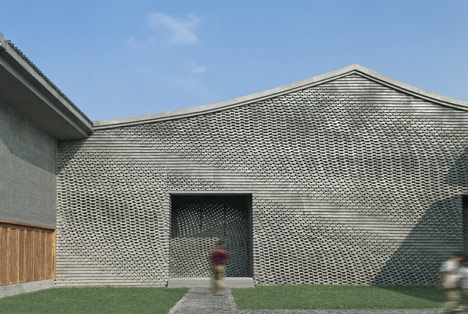
Earlier this year Archi-Union also completed a teahouse and library with twisted concrete walls.
Above: ground floor plan – click above for larger image
Other recent stories from China include skyscrapers inspired by spacecraft and a village of towering apartment blocks in the mountains.
Above: first floor plan – click above for larger image
See more stories about design in China »
See more stories about brick buildings and projects »
Above: roof plan – click above for larger image
Photography is by Shen Zhonghai.
Here’s some more information from Archi-Union:
The Lan Xi Curtilage
The spatial layout of this project represents a new interpretation of a traditional South China Garden. The multiple layouts of the longitudinal residence and courtyard reflect a hierarchical and multi-dimensional spatial pattern of traditional gardens. The silhouettes of the building’s roof embody rolling mountains and rivers, and also function as metaphor of the traditional Chinese sloping roof culture.
Above: courtyard concept diagram – click above for larger image
The design of the ripple wall derived from a digital interpretation of water, a flexible yet natural conception. We developed an algorithm that mimicked the transient behavior of water, which could be frozen in time allowing a literal architectural expression of its transient behavior. We adapted this algorithm to process a traditional building material, blue bricks, in a staggered joint pattern, in the same way as it produced a surface before, creating a bonded brick pattern with the intrinsic dynamics of water, and providing a light and transparent effect as well as structural walls.
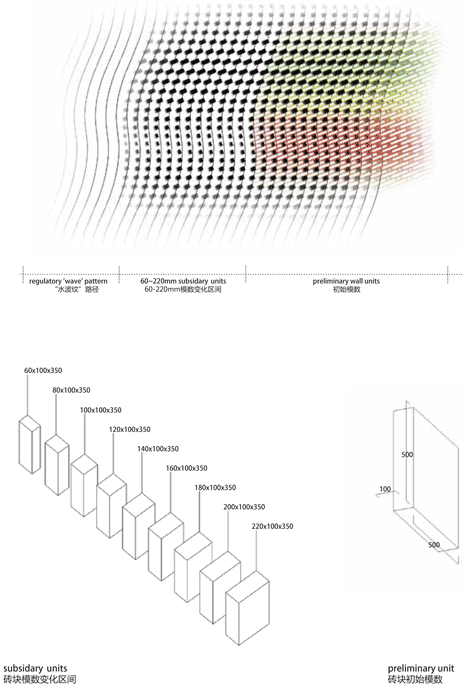
Above: brickwork pattern diagram – click above for larger image
The design focuses on developing an artistic pattern as well as on creating a feasible fabrication pattern. As a robotic arm was not available to lay the bricks automatically due to financial constraints, the masonry had to be completed manually in order to match the rigorous schedule of the three month construction period. Five kinds of brick joint template were devised and the joint gradient was achieved through the permutation and classification of the five template values, which were translated to a simple brick-laying schedule. The finished building is testament that light and shadow playing across the façade embody the dynamic effects of water. A careful combination of digital design and lo-tec fabrication to actualize digital fabrication exactly reflects the combination of digital technologies and local materials and fabrication.
Above: roof structure diagram – click above for larger image
Location: International Intangible Cultural Heritage Park, Chengdu, China
Client: Chengdu Qingyang Suburb Construction & Development Co., Ltd.
Area: Approx 4000m2
Design: June, 2008 – March, 2009
Construction: April, 2010 – October, 2011
Architect: Philip F. Yuan / Archi-Union Architect

























